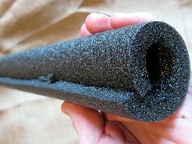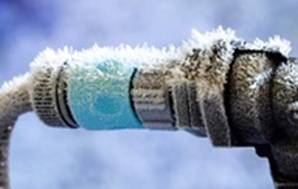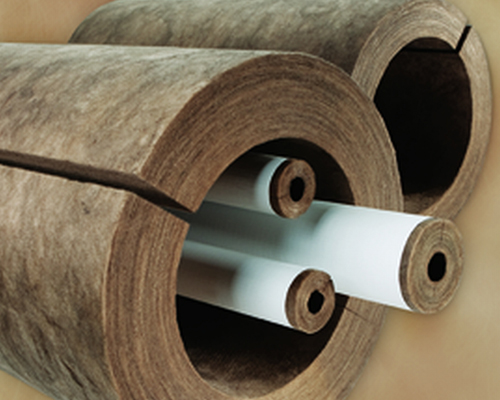Pipe Insulation Basics
by Mark Row
 Is Pipe Insulation Worth It?
Is Pipe Insulation Worth It?
When considering insulation, people usually have in mind those parts of their home which are visible and apparent, often disregarding those areas that are hidden behind walls, under floors etc, which are also very important. One such case is with pipe insulation. There are many advantages to this and many obvious results and outcomes, not only because insulation will properly protect your pipework but also because this will contribute to your homes thermal and acoustic performance. This article provides some pipe insulation basics, including certain positive effects and most commonly used insulation materials.
Why Insulate Your Pipes?
If you are wondering whether to insulate your pipes, these are a few important reasons that may convince why it is not only useful but also necessary.
The first advantage is condensation prevention. Due to the difference between temperature of the pipes surface and the ambient temperature, water vapor in the form of condensation can occur. This can cause many moisture issues with considerable impact on your pips durability and function, since it will cause corrosion in time and thus deterioration of the pipework. This all can be prevented with proper insulation that has higher dew point temperature than the air and has some water-vapor barrier that will prevent the moisture to go through the material and reach the surface of the pipes.
Now, just think how many times have you burnt yourself by touching something that is above your pain threshold? Well. proper pipe insulation will prevent just that, that is offer some protection from extreme temperatures, since it will make the pipes that are too cold warmer and cool down those which are too hot, which is especially important when any repair work needs to be performed.
Moving on to saving some energy. Namely, pipes used for, let’s say conducting hot water, will radiate some heat from their surface, since it operated in temperatures far different from the temperature of the air surrounding it. Well, this difference presents heat flow which can be something you want to avoid and prevent sometimes. This is done by insulating your pipework, since insulation will reduce heat flow through thermal resistance. This way insulation will prevent the pipes emitting heat and thus warming up the space. On the other hand heat flow does not need to be necessarily a bad thing, but can also increase the buildings overall thermal performance. However, in order to achieve this you will need a properly insulted structure that will be able to keep the heat within instead of letting it escape from the building. If this is the case, your pipes will radiate some heat that will additionally warm up your home and help you save energy.

Minimize the Pipe Freezing Risk
Opposite to the danger of your pipes overheating is the potential of pipe freezing which also needs to be avoided. Basically, pipes located in cold spaces or used to conduct cold water are exposed to the risk of freezing and damaging the water supply system, since when exposed to temperatures below water freezing point, frozen water will expand and cause many problems. Type of the insulation material and its thickness will depend on the size of a pipe, but you will notice that smaller pipes need more insulation than larger ones, since water will freeze more easily and more quickly in smaller pipes. On the other hand, you’ll need to understand that pipe insulation will not prevent water from freezing, but only postpone it, that is minimize (or reduce) the pipe-freezing risk. Greater R value of the insulation material means more time needed for the water to freeze and thus better protection. Recommended insulation thicknesses are also prescribed by the UK Copper Board Water bylaw pipe insulation requirements, depending on the pipe size and insulation thermal conductivity, given in the table below, where numbers given in the brackets are shown in BS 6700.

Finally, another important aspect is most certainly acoustic insulation. On one hand mechanical noise coming from your pipework installed inside the wall or beneath the floor can be decreased by using some insulation material intended for soundproofing. On the other hand, insulated pipes can present a noise barrier themselves and, when combined with let’s say wall insulation can drastically decrease the noise impact.
Common Insulation Materials
Choosing the proper insulation material is another important step in the whole process and will depend on various factors, including surface emissivity value, thermal conductivity, thickness and density of the insulation material, vapor resistance and the location of the pipework. However, most commonly use materials are:
- Rock mineral wool which can often be seem in commercial and industrial buildings where proper fire-performance of the insulation is required. Rock wool is manufactured from dense mineral fibers bonded with some organic binders, has great thermal performance and can withstand high temperatures due to the manufacturing process.

- Glass wool is another commonly used material where inorganic glass fibers are bonded together, giving a great thermal and acoustic performance.
- Some people go for rigid PIR, PUR and phenolic foam which has low thermal conductivity, which is a good thing, meaning that smaller amount of insulation material can be used not only for proper pipe insulation but also in order of meeting the values set in applicable regulations.
- Other used materials are aerogel (which can be wrapped around pipes), flexible rubber foams (which have great water-vapor resistance) or cellular glass.
If you have any questions regarding different Pipe Insulation Products, post them in the comments section below.


















































































































